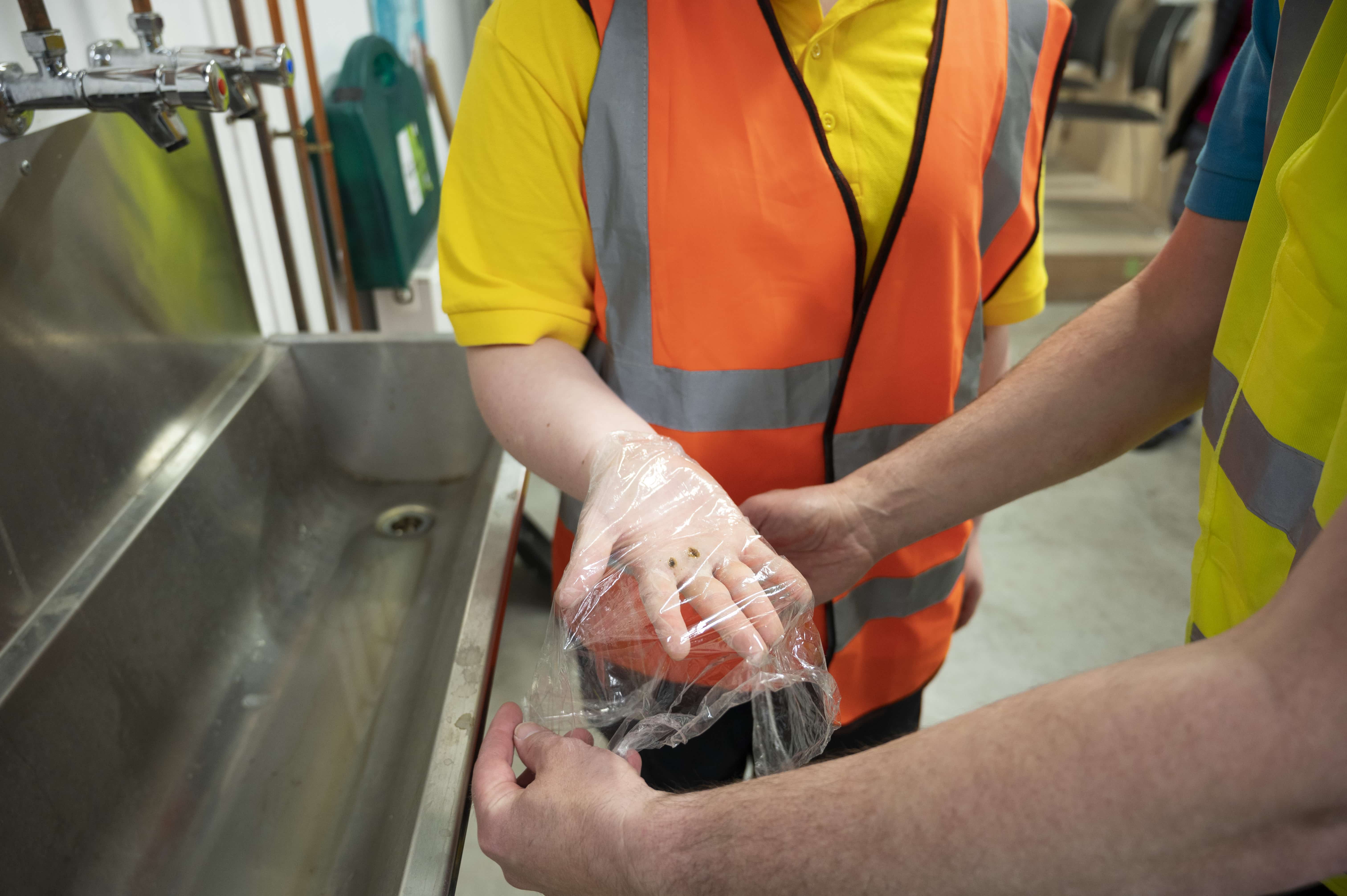Given the risks associated with the manufacturing industry, you need to put appropriate first aid provisions in place to protect your team.
In this blog, we’ll focus on employee safety within the manufacturing industry, and how first aid training can help you provide the appropriate care, if needed.
Hazards in the manufacturing industry
Manufacturing companies put measures in place to improve employee safety, but the industry is inherently risky and staff are exposed to several hazards.
Machine-related risk
There are multiple risks associated with the machinery used in manufacturing. This includes entanglement in moving parts, the threat of crushing and shearing incidents, and the ever-present danger of electrical hazards.
Chemical exposure risks
Chemical exposure could be an increased level of risk within the manufacturing industry. Handling hazardous substances during various manufacturing processes requires meticulous attention.
Proper safety measures must be in place, and proper storage and handling procedures must be enforced to reduce the risk of chemical exposure.
The mandatory use of Personal Protective Equipment (PPE) is essential, whilst your employees need to understand why the chemicals they’re handling pose a risk. Following site procedures and safety protocols is crucial in mitigating these risks.
Slips, trips and falls
In manufacturing, slips, trips, and falls are commonplace. Therefore, it’s important to introduce appropriate measures to mitigate these risks.
Keep walkways unobstructed, and introduce designated work zones to minimise accident risks. Effective breaks and fatigue management strategies are also crucial to ensure your team is alert and can react to potential risks, should they arise.
However, sometimes slips, trips and falls are unavoidable, and this can lead to injuries involving bones, muscles, or joints, whilst there's a distinct possibility of spinal injuries.
In these circumstances, it’s important to have first aid provisions to guarantee that the casualty receives appropriate care, a focal point covered in our 3-day First aid at work course.
Our interactive training equips learners with a comprehensive understanding of the suitable approaches, enabling them to provide confident and effective care.
Explore our first aid courses tailored to provide you and your team with essential skills
Uncover comprehensive offerings that align seamlessly with your organisation's safety objectives and boost skills and confidence across your team.
What are the most common injuries in the manufacturing industry?
There are common injuries associated with the manufacturing industry. These include:
- Musculoskeletal injuries: Repetitive tasks, heavy lifting, and awkward postures can contribute to musculoskeletal injuries such as strains, sprains, and muscle injuries.
- Cuts and lacerations: The use of machinery, sharp tools, and handling of materials can result in cuts and lacerations. These injuries are often associated with manual handling and the operation of machinery.
- Falls: Working at heights, slippery surfaces and uneven floors can contribute to falls. Whether from elevated platforms, stairs, or on the ground level, falls are a common cause of injuries.
- Struck-by objects: Workers may be struck by objects such as tools, materials, or equipment. This can occur during various manufacturing processes or when materials are being transported.
- Caught-in or caught-between incidents: Workers may face hazards related to getting caught in or between machinery or equipment. This can happen during operation, maintenance, or repair activities.
- Electrical injuries: Manufacturing equipment often involves electrical components. Electrical shocks or burns can occur if proper precautions are not taken or if there are faults in the electrical systems.
- Chemical exposures: Handling and processing chemicals are common in manufacturing. Exposure to hazardous substances can lead to skin irritation, respiratory issues, or other health problems.
- Noise-induced hearing loss: Prolonged exposure to loud machinery and equipment can cause hearing damage over time.
- Heat and cold stress: Workers may be exposed to extreme temperatures, leading to heat or cold stress-related injuries.
- Machine-related injuries: Accidents involving machinery, such as getting caught in moving parts, can result in severe injuries if safety measures are not strictly followed.
Although robust safety protocols are often introduced in the manufacturing sector to protect your workers, there are instances when such injuries will occur.
Red Cross Training ensures you and your team have the required skills to deal with such occurrences promptly and effectively.
How first aid improves health and safety in engineering
In manufacturing, accidents can occur in the blink of an eye. You need to have the ability to provide prompt first aid to reduce the severity of injuries.
Whether it's a minor cut, a sprain, or a more severe incident, swift first aid measures can prevent situations from escalating and greatly improve safety in manufacturing.
Quick actions such as cleaning small grazes, applying pressure to a heavy bleed or immobilising a suspected broken bone can prevent further damage and contribute to a faster and more effective recovery.
Immediate first aid can also prevent complications and long-term consequences. For example, basic first aid for burns or wounds can reduce the risk of infection and support a smoother recovery process.
Moreover, health and safety compliance is a legal requirement in many regions. Therefore, first aid training ensures your employees are trained in basic first aid measures, which can ensure you’re compliant with essential legislation.
The effectiveness of first aid training
Introducing first aid training is crucial for safeguarding your workforce, and choosing the right training provider is paramount.
Here at Red Cross Training, we’ve helped many learners gain the skills they need to thrive, gaining a 99% customer satisfaction score from learners who’ve completed our courses.
The effectiveness of first aid provision depends on the quality of the training you receive. Opting for a renowned provider like Red Cross Training ensures employees receive training aligned with the latest industry standards and best practices.
Accredited and reputable, our training brings a wealth of knowledge and experience to the table.
When assessing potential first aid training providers, credentials, certifications, and track records should be scrutinised. We’re dedicated to setting the standards for first aid training, and our courses are recognised by leading health and safety organisations. With a history of successfully training diverse industries, tailoring programs to meet the needs of our learners.
Our expert trainers, equipped with real-world experience are central to the quality of our training. Their expertise ensures you gain theoretical knowledge and practical insights you can use in emergencies.
How does our approach to first aid training apply to the manufacturing industry?
Booking a 3-day First aid at work training course with Red Cross Training provides your employees with a holistic grasp of workplace safety, health, and organisational well-being.
Our training fosters a proactive mindset amongst your team and helps you and your employees understand how to respond in a first aid emergency. The course covers a range of scenarios applicable to the manufacturing industry. For instance, how to care for a broken bone.
The most important thing to remember when treating a broken bone is to keep the injured area still.
When providing first aid, you’ll rarely have equipment like splints to hand. Therefore, learners are shown how to improvise using makeshift items, such as rolled-up clothing, to support such an injury.
Improving existing first aid skills
If you’ve previously completed first aid training, you may need additional training to supplement existing skills and renew your understanding.
For example, as part of the First aid at work requalification course, learners are also shown and practice how to apply a sling. This is an effective way to support and immobilise an upper limb fracture.
How is first aid training delivered?
Because learning preferences differ, we don’t apply a one-off approach to our first aid training. Instead, we adapt our methods to cater to your distinct learning styles to provide a personalised experience.
There are instances, however, when a practical approach is encouraged. For instance, the First aid at work requalification course is delivered in a classroom setting and adopts a practical, hands-on approach. Learners are assessed through practical demonstrations, question-and-answer sessions, quizzes, and engaging activities like roleplay.
For example, when learning how to put on a sling, learners work in pairs and small groups. This is valuable because learners experience what it’s like to be the casualty, as well as the first aider.
Each learner receives a comprehensive training pack, including resources for practice, meeting and exceeding HSE criteria.
Topics: FAW Industry




